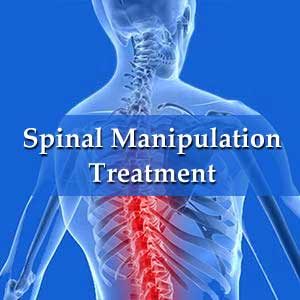- Home
- Editorial
- News
- Practice Guidelines
- Anesthesiology Guidelines
- Cancer Guidelines
- Cardiac Sciences Guidelines
- Critical Care Guidelines
- Dentistry Guidelines
- Dermatology Guidelines
- Diabetes and Endo Guidelines
- Diagnostics Guidelines
- ENT Guidelines
- Featured Practice Guidelines
- Gastroenterology Guidelines
- Geriatrics Guidelines
- Medicine Guidelines
- Nephrology Guidelines
- Neurosciences Guidelines
- Obs and Gynae Guidelines
- Ophthalmology Guidelines
- Orthopaedics Guidelines
- Paediatrics Guidelines
- Psychiatry Guidelines
- Pulmonology Guidelines
- Radiology Guidelines
- Surgery Guidelines
- Urology Guidelines
Spinal manipulation treatment for low back pain associated with modest improvement in pain, function

Among patients with acute low back pain, spinal manipulation therapy was associated with modest improvements in pain and function at up to 6 weeks, with temporary minor musculo skeletal harms, according to a study published by JAMA.
Back pain is among the most common symptoms prompting patients to seek care. Lifetime prevalence estimates of low back pain exceed 50 percent. Treatments for acute back pain include analgesics, muscle relaxants, exercises, physical therapy, heat, spinal manipulative therapy (SMT) and others, with none established as superior to others. Paul G. Shekelle, M.D., Ph.D., of the West Los Angeles Veterans Affairs Medical Center, Los Angeles, and colleagues conducted a review and meta-analysis of previous studies to assess the effectiveness and harms associated with spinal manipulation compared with other non manipulative therapies for adults with acute (six weeks or less) low back pain.
Of 26 eligible randomized clinical trials (RCTs) identified, 15 RCTs (1,711 patients) provided moderate-quality evidence that SMT has a statistically significant association with improvements in pain. Twelve RCTs (1,381 patients) produced moderate-quality evidence that SMT has a statistically significant association with improvements in function. No RCT reported any serious adverse event. Minor transient adverse events such as increased pain, muscle stiffness, and headache were reported 50 percent to 67 percent of the time in large case series of patients treated with SMT. Heterogeneity (differences) in study results was large, and was not explained by type of clinician performing SMT, type of manipulation, study quality, or whether SMT was given alone or as part of a package of therapies.
The authors write that the size of the benefit of SMT for acute low back pain is about the same as the benefit from non-steroidal anti-inflammatory drugs, according to the Cochrane review on this topic.

Disclaimer: This site is primarily intended for healthcare professionals. Any content/information on this website does not replace the advice of medical and/or health professionals and should not be construed as medical/diagnostic advice/endorsement or prescription. Use of this site is subject to our terms of use, privacy policy, advertisement policy. © 2020 Minerva Medical Treatment Pvt Ltd